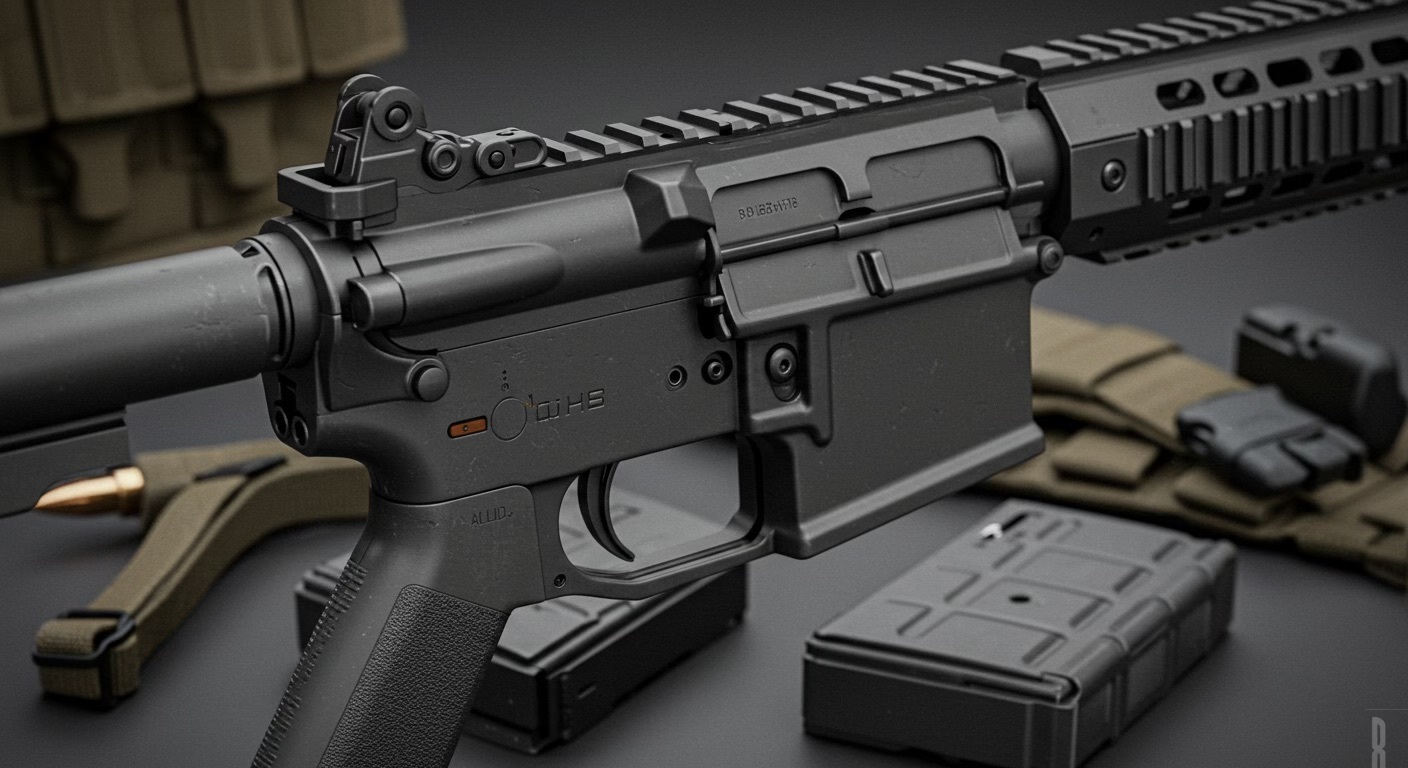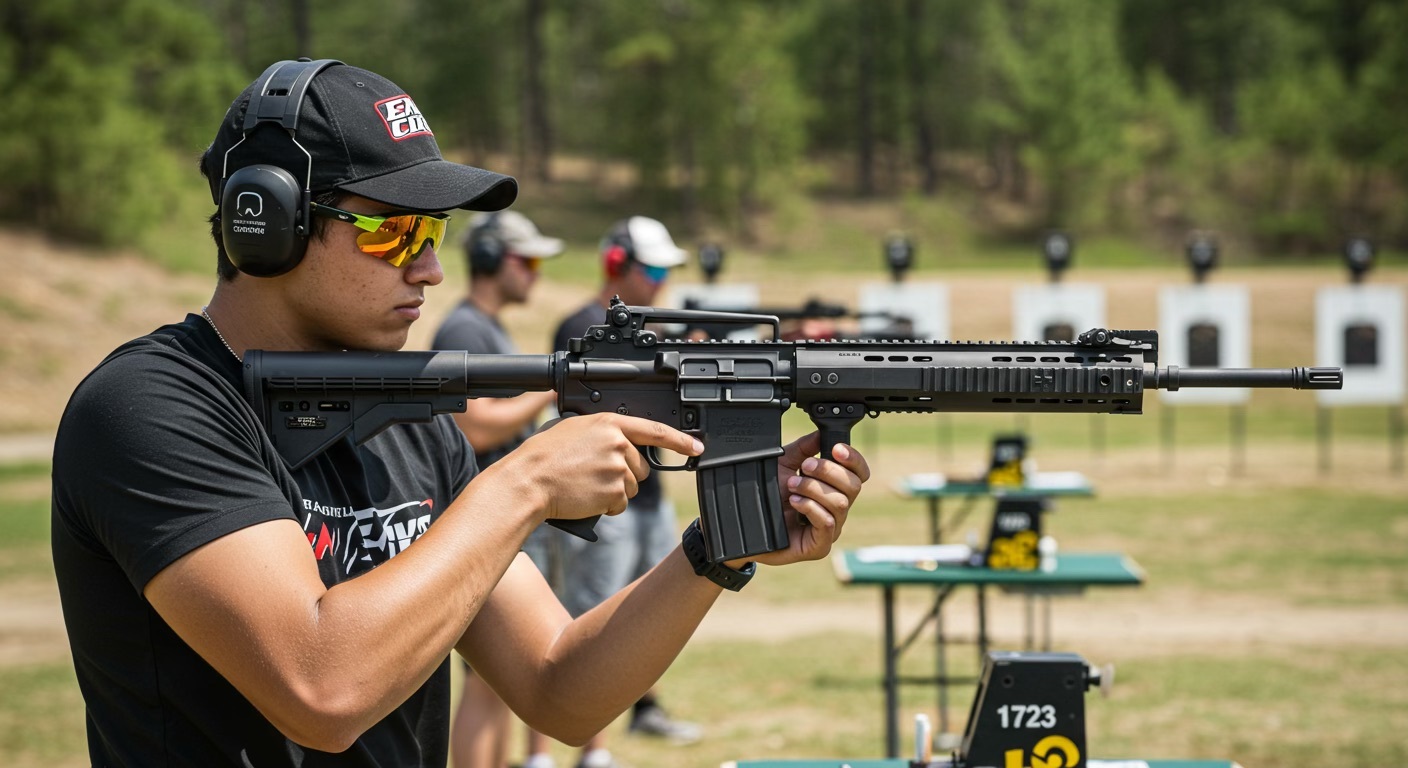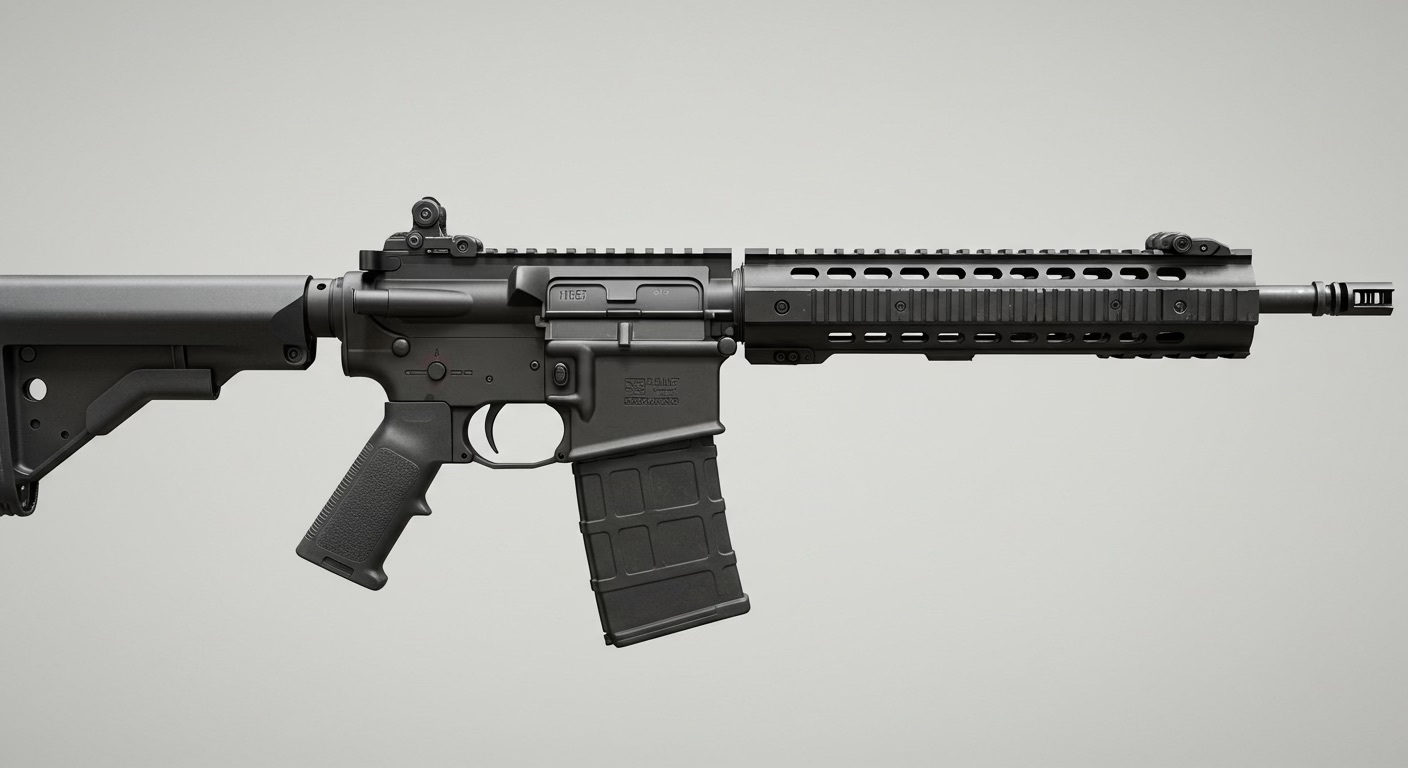When it comes to rifle cartridges for long-range shooting and hunting, the debate between established calibers and newer innovations never seems to end.
The 6mm Advanced Rifle Cartridge (ARC) has emerged as a challenger to the time-tested .308 Winchester, creating quite a stir among precision shooters and hunters alike. With improvements in ballistic performance becoming increasingly important for modern shooters, understanding the differences between these two cartridges is crucial for making an informed decision.
Whether you're building a custom rifle or selecting a pre-built upper, the cartridge choice will significantly impact your shooting experience. For precision shooters looking to upgrade their AR platform, AR15 Parts offers a wide selection of components designed for optimal performance with both calibers.
In this comprehensive comparison, we'll explore the origins, ballistics, effective range, recoil characteristics, and practical applications of both the 6mm ARC and .308 Winchester. By the end, you'll have a clear understanding of which cartridge might better suit your specific shooting needs.
How the 6mm ARC and .308 Winchester Came to Serve Very Different Needs
The .308 Winchester (7.62×51mm NATO) has been a staple in the shooting world since its introduction in 1952. Originally developed as a military cartridge to replace the longer .30-06 Springfield, it quickly gained popularity among civilian shooters for its versatility and effectiveness. The .308 has served admirably in military, law enforcement, hunting, and competitive shooting applications for over 70 years.
In contrast, the 6mm ARC is a relatively new player, introduced by Hornady in 2020. It was specifically designed to address the limitations of existing intermediate cartridges used in AR-15 platforms. The 6mm ARC was developed to deliver enhanced long-range performance while maintaining compatibility with standard AR-15 receivers, simply requiring a barrel change, bolt, and magazine to convert from 5.56 NATO.
This modern design approach focused on balancing external ballistics, terminal performance, and reduced recoil in a compact package. The 6mm ARC fills a niche between the 5.56 NATO and larger cartridges like the .308 Winchester, making it an intriguing option for those seeking improved ballistics without moving to a larger firearm platform.
Shooters interested in the 6mm ARC can find premium components like the 18" 6MM ARC Barrel - Ballistic Adv - SPR that are specifically engineered for optimal performance with this cartridge.
Velocity, Trajectory, and Wind Drift Compared Between 6mm ARC and .308
When comparing ballistics, several factors come into play: velocity, energy, trajectory, and wind drift. Here's how these two cartridges stack up:
Velocity and Energy
The .308 Winchester typically pushes a 168-grain bullet at around 2,700 fps from a 24-inch barrel, generating approximately 2,700 ft-lbs of energy at the muzzle. This substantial energy makes it an excellent choice for medium to large game hunting out to 800 yards.
The 6mm ARC, with its smaller 103-108 grain bullets, achieves velocities of approximately 2,750-2,800 fps from an 18-inch barrel. While it produces less muzzle energy (around 1,700 ft-lbs), its higher ballistic coefficient bullets maintain velocity better downrange, resulting in flatter trajectories and less wind drift.
Trajectory and Wind Performance
The 6mm ARC truly shines in external ballistics. Its sleek, high ballistic coefficient bullets experience less drag and wind deflection. At 1,000 yards, a 108-grain 6mm ARC bullet might drift 30-35% less in a 10 mph crosswind compared to a 168-grain .308 bullet. This translates to easier long-range hits, especially in variable wind conditions.
The .308 Winchester has a more pronounced bullet drop at extended ranges, requiring more elevation adjustment. However, for distances under 600 yards, the difference in trajectory between the two cartridges becomes less significant for most practical applications.
How Far and How Accurately Each Cartridge Performs in the Field
The effective range of a cartridge depends on several factors, including terminal performance, trajectory, and the shooter's ability to compensate for environmental conditions.
The .308 Winchester maintains sufficient energy for ethical harvesting of medium-sized game (approximately 1,000 ft-lbs) out to about 800 yards. For precision target shooting, skilled marksmen can consistently hit targets beyond 1,000 yards, though the increasing drop and wind drift make this challenging.
The 6mm ARC, with its flatter trajectory and superior wind resistance, excels at long-range precision shooting. While it may not carry the same energy as the .308 at all distances, its ballistic advantages make it easier to achieve consistent hits at extended ranges. For hunters pursuing deer-sized game, the 6mm ARC remains effective to approximately 600-700 yards.
For shooters looking to maximize the potential of the 6mm ARC, a quality complete upper like the 18" 6MM ARC Complete Upper - Satern Medium SS can provide match-grade accuracy right out of the box.
Which Cartridge Feels Better Behind the Trigger and Why It Matters

Recoil significantly impacts shooter performance, especially during extended sessions or rapid follow-up shots. This is an area where the differences between these cartridges become quite apparent. The 6mm ARC produces notably less felt recoil than the .308 Winchester, approximately 30-40% less in comparable rifle platforms. This reduced recoil translates to:
- Less shooter fatigue during extended practice sessions
- Faster target reacquisition for follow-up shots
- Reduced flinching, especially for recoil-sensitive shooters
- Better spotting of impacts through the scope
The .308 Winchester, while manageable, produces substantial recoil that can affect shooter performance, particularly in lighter rifles. However, this additional recoil is the trade-off for the increased power that makes the .308 so effective for larger game and barrier penetration.
What You’ll Need to Run 6mm ARC or .308 in Your Next Build
One of the most significant differences between these cartridges lies in the platforms they're typically chambered in:
6mm ARC Platforms
The 6mm ARC was specifically designed for the AR-15 platform, offering enhanced performance without requiring a move to a larger receiver. It uses a modified 6.5 Grendel case, sharing the same bolt face and magazine compatibility. This means shooters can easily convert their existing AR-15s to 6mm ARC with:
- A barrel change
- A 6.5 Grendel/6mm ARC bolt
- 6.5 Grendel/6mm ARC magazines
This compatibility makes the 6mm ARC an attractive option for those who already own and are familiar with the AR-15 platform but want improved ballistic performance. Many shooters find the ergonomics and handling characteristics of the AR-15 preferable for certain applications compared to larger, heavier rifles.
.308 Winchester Platforms
The .308 Winchester requires larger action rifles due to its case dimensions. Common platforms include:
- AR-10/SR-25 pattern rifles
- Bolt-action hunting and precision rifles
- M14/M1A variants
- Various semi-automatic battle rifles
These larger platforms typically result in heavier rifles with increased magazine capacity limitations compared to AR-15-based systems. However, they offer robust reliability and the ability to handle the increased pressures and recoil of the .308 cartridge.
For shooters considering either cartridge, AR15 Parts offers components and complete uppers to help you build or upgrade your rifle to match your specific shooting requirements.
What You Can Expect to Spend on Ammo and Where to Find It
Ammunition considerations play a major role in the practical use of any cartridge, affecting everything from training frequency to hunting accessibility.
.308 Winchester Ammunition
As one of the most popular rifle cartridges worldwide, .308 Winchester enjoys:
- Widespread availability in virtually every gun store
- Extensive variety of bullet weights and styles (150-180 grains being most common)
- Military surplus options for economical practice
- Affordable factory ammunition (relatively speaking, in today's market)
- Abundant reloading components and data
This ammunition abundance makes the .308 a practical choice for shooters who value convenience and options.
6mm ARC Ammunition
As a newer cartridge, the 6mm ARC faces some challenges:
- Limited factory ammunition options, primarily from Hornady
- Higher cost per round for factory ammunition
- Less availability in local stores (often requiring online ordering)
- Growing but still limited selection of reloading components
- Fewer load data resources for handloaders
However, the 6mm ARC situation is improving as the cartridge gains popularity, with more manufacturers beginning to offer loaded ammunition and components.
Which Cartridge Works Best for Real-World Hunting Scenarios
Both cartridges are capable hunting rounds, but they excel in different scenarios:
The .308 Winchester has established itself as a versatile hunting cartridge for:
- Medium to large game (deer, elk, bear)
- Shots at varied distances (0-600 yards typical)
- Hunting in areas with thick cover or where penetration is critical
- Situations where bullet weight and frontal diameter are prioritized
The 6mm ARC is emerging as an excellent option for:
- Medium-sized game (deer, antelope, hogs)
- Open country hunting where longer shots are likely
- Situations where a lighter, more portable rifle is advantageous
- Hunters who are recoil sensitive or prefer faster follow-up shots
For varmint hunting, the 6mm ARC offers a flatter trajectory and less wind drift, making it arguably superior to the .308 for smaller targets at extended ranges.
How 6mm ARC and .308 Stack Up in the Competitive Shooting World

In competitive shooting disciplines, the choice between these cartridges often comes down to specific rules and personal preferences:
Precision Rifle Series (PRS) and Similar Competitions
The 6mm ARC has found a home with many competitive shooters due to its:
- Flat trajectory requiring less elevation adjustment
- Reduced wind drift for easier wind calls
- Mild recoil that allows shooters to spot their impacts
- Lighter overall rifle weight that reduces fatigue in field courses
Traditional High Power and Service Rifle
The .308 Winchester continues to dominate in:
- Traditional high-power competitions
- Military service rifle matches
- Competitions with power factor requirements
- Formats where the .308's established data and proven performance give competitors confidence
Frequently Asked Questions
Is the 6mm ARC just a fad, or does it represent a real advancement?
The 6mm ARC represents a genuine advancement in intermediate cartridge design. By optimizing the case capacity for 6mm bullets with high ballistic coefficients, Hornady created a cartridge that delivers impressive long-range performance from the AR-15 platform.
Its adoption by special operations units and growing popularity among precision shooters suggest it's more than just a passing trend. The cartridge effectively bridges the gap between 5.56 NATO and larger calibers, offering an excellent balance of ballistics, recoil, and platform compatibility.
How does barrel life compare between 6mm ARC and .308 Winchester?
Barrel life generally favors the .308 Winchester. With its larger bore diameter and typically lower operating pressures, .308 barrels typically last 5,000-10,000 rounds before precision begins to deteriorate.
The 6mm ARC, like many 6mm cartridges, will typically show throat erosion earlier, with precision barrels often showing degradation between 2,000-3,000 rounds. However, barrel life varies significantly based on factors like firing schedule, cleaning practices, and acceptable accuracy standards.
Can the 6mm ARC effectively replace the .308 for military and law enforcement applications?
While the 6mm ARC offers certain advantages in weight, recoil, and ballistics, it cannot entirely replace the .308 in military and law enforcement roles. The .308 Winchester/7.62 NATO remains superior for barrier penetration, vehicle interdiction, and situations requiring substantial terminal effect at medium ranges.
However, the 6mm ARC excels in precision applications where weight savings and reduced recoil are advantageous, which is why it has found favor with specialized units alongside, rather than replacing, the .308.
Which cartridge is more cost-effective for a shooter who practices regularly?
For high-volume shooters, the .308 Winchester currently offers better economics. Factory ammunition is more widely available and typically 20-30% less expensive than 6mm ARC. For reloaders, .308 components (especially brass) are more abundant and affordable.
However, the 6mm ARC uses less powder per load and may allow more economical practice if the shooter is willing to reload. Additionally, reduced recoil means shooters might effectively develop skills with fewer rounds fired, potentially offsetting some cost difference.
What's the best barrel length for each cartridge to maximize performance?
The .308 Winchester typically reaches optimal velocity with a 20-24" barrel, with diminishing returns beyond 24". Most precision rifles in .308 use 20-22" barrels as a good compromise between velocity and handling.
The 6mm ARC is more efficient in shorter barrels, achieving near-optimal performance in 18-20" barrels. This efficiency in shorter barrels is one of the 6mm ARC's advantages, allowing for more compact and maneuverable rifles without significant ballistic penalties.
Choosing Between 6mm ARC and .308 for Your Shooting Needs

Both the 6mm ARC and .308 Winchester represent excellent cartridge options, each with distinct advantages for specific applications.
The 6mm ARC offers superior ballistics, reduced recoil, and compatibility with the AR-15 platform, making it ideal for long-range precision shooting and hunting medium-sized game. Meanwhile, the .308 Winchester continues to excel with its versatility, power, and widespread ammunition availability.
Your choice ultimately depends on your specific needs, shooting style, and intended use. For shooters looking to explore either option, quality components from trusted suppliers can help you build a rifle system that maximizes the potential of whichever cartridge you choose.
Contact AR15 Parts to Build for Precision and Performance
At AR15 Parts, we help builders and shooters upgrade with confidence, whether you're going with the proven .308 or the efficient 6mm ARC. From precision barrels to complete uppers and matched bolts, we carry everything you need to get more from your rifle.
Reach out to AR15 Parts today to start your next AR build with components that match your performance goals.

